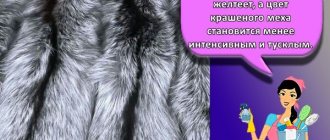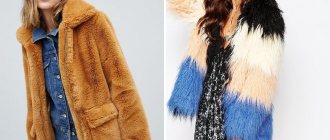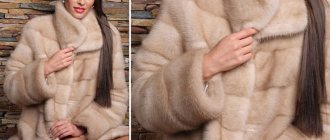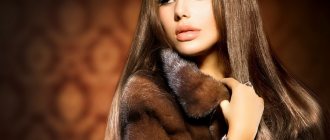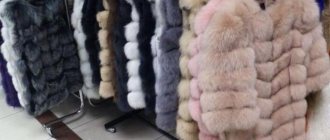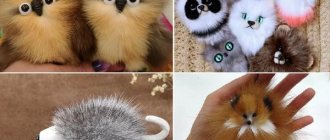There are hundreds of cat breeds in the world, and in such a variety there is a pet to suit every cat lover's taste. Many people dream of something exotic, and a cat that looks like a lynx can become one.
The main similarity between these breeds is the presence of tufts on the ears. There are now several breeds similar to the European and even North American lynx. Wild steppe manulas also have a vague resemblance to lynxes, but these animals are practically not amenable to domestication. Therefore, it is worth paying attention to other options.
© shutterstock
Pixie bob
There are domesticated cat breeds that could well be described as an animal that would resemble a lynx. Of all the lynx cats, the most famous and popular is the pixie bob - such animals are sometimes even called mini-lynxes, and this is a completely justified comparison. In appearance, the similarity is obvious - the muscles are well developed, a small tail, erect ears, and with pronounced tassels. The color is also characteristic - like that of wild relatives.
It should be noted that the similarity is only external, because the character of a cat of a breed similar to a lynx is not at all wild. They are very sociable and affectionate animals and get along well with people.
Compared to many other domestic breeds, Pixie Bobs are even more intelligent and quick-witted. They are easy to train and can be trained to carry out various commands relatively quickly. Many pixie-bobs love to go for walks with people; such a cat can be walked on a leash.
Distinctive features of the breed:
- It was introduced quite recently, in the 1980s. Currently, development has not yet been completed; cats continue to improve as a separate breed of domestic cats.
- It got its name thanks to the nickname of the first such cat - her name was Pixie. It looked very much like a lynx and had six toes on its paws.
- The main distinguishing feature of the pixie bob is not even its unusual appearance, but its six toes.
- They have a long life expectancy, are very easy to care for, and are very rarely susceptible to disease. All this makes the Pixie Bob an almost ideal pet.
- The coat also does not require special care, since the animal practically does not shed.
Currently, the development of the breed continues with the aim of consolidating the external wild features. The goal is to breed a domestic cat that looks as much like a lynx as possible. So far, the option is quite rare, and the cost of animals is very high. However, this is a fair price to pay for a real wild exotic with a gentle, calm character.
© shutterstock
ALL ABOUT LYNX FUR
In Russia, lynx is practically not hunted and all lynx coats presented on the Russian market are made from Canadian lynx or lynx cats. However, they are very similar, which we will discuss below. Russian lynx are single products made from skins obtained by poaching. Also, fishing licenses are issued from time to time, so the presence of Russian lynx is not completely excluded; its skins are sold at the Soyuzpushnina auction. In captivity, lynx are not bred for their skins. Therefore, “caged” lynx simply does not exist in principle, all bred lynx are live animals for sale, a lynx kitten costs much more than the skin of an adult animal.
Pros of lynx fur:
— Relative wear resistance compared to delicate furs. This is status fur, but at the same time it is not as fragile as, for example, chinchilla.
— Lightness of skins. Despite the fact that the lynx skin is not small in area, it is quite light. Compared to some other furs, it is practically weightless!
- It's very warm. Voluminous and soft fur perfectly protects from the cold. A lynx coat is well suited for those who are “freezing”.
The lynx skin is heterogeneous and different parts of it are valued - the most sought after is the belly with airy white or yellowish fur with black spots, and the least sought after is the back with low pile. Depending on what part of the skin was used for a fur coat, the cost of the product is also determined. In elite fur coats, only the abdominal parts of the skin are used. In medium-level fur coats, the entire skin is used, but the light, delicate fur from the belly will definitely be in the most visible place - the collar or chest.
If you touch the lynx, you will feel extraordinary softness. This fur is very pleasant to the touch and fluffy.
The range of prices for lynx fur coats is very large and depends on various nuances of quality and parts of the skins that were used for tailoring.
You can divide the prices and level of the product approximately like this (from the cheapest to the most expensive):
— Inexpensive fur coats made from lynx backs.
— A large group of products with the most popular lynx coats, which are sewn mainly from the yellow parts of the skin.
— Finishing expensive fur coats made of mink, sable, and so on.
— Elite fur coats made from the belly parts of skins. These products are very expensive and are inaccessible to most. Such fur coats are a single, exclusive product.
Cat breeds similar to lynx
The group of cats with tassels includes several breeds . Even the Neva Masquerade can acquire similar decoration.
Felinologists are confident that this is how the genes of our ancestors manifest themselves. The trait is not inherited, but appears randomly, so masquerade cats are not included in this group.
Caracal
Caracal is an oriental beauty with a wild and affectionate disposition . A mysterious, spectacular, graceful cat with a charming look will not leave anyone indifferent.
Most of the animals live in the wild . Domesticated individuals are rarely found.
This is an ancient species of cats living in Asia Minor and Central Asia , in the steppes and deserts of Africa, and in the Middle East. It is less common in Kyrgyzstan, Turkmenistan, and Uzbekistan; about 100 individuals live in the regions of Dagestan.
The name of the breed comes from the Turkic “kara kylak” , which in translation sounds like “black ear”. The back of the ears and tassels are painted black. The black border also runs along the inner edge of the ear.
Caracal is a cat breed similar to a lynx, distinguished by its large size : height at the withers 45-50 cm in height, body length 80 cm, tail length 30 cm. The body is strong, muscular, proportional, the paws are strong and long, covered with short, hard hair. The muzzle is elongated, wedge-shaped, the eyes are large, expressive, the ears are long, decorated with black tassels. Life expectancy is 15-18 years.
The wild caracal is a ferocious and unapproachable hunter, lightning fast, stealthy and strong. The domestic caracal is an affectionate and gentle animal, a friend and family pet . An important condition for successful socialization is education with love and respect, without physical punishment.
Caracals have excellent memory and developed intelligence . Cats love to go for walks, spend time with people, and be the center of attention. The representative of the breed is territorial, so stray dogs and cats are not allowed into a private home. The caracal gets along well with other pets, except birds and rodents.
Caracals have excellent health and rarely get sick , living to a ripe old age.
Caraquet
The caraquet is a domestic lynx cat similar to the wild caracal . American breeders tried to cross a domestic caracal with an Abyssinian cat. The experiment was a success. This is how the first hybrids of the second generation were obtained.
The second birth of the Carakets happened in the Russian city of Ivanovo. Breeder Irina Nazarova was inspired by the idea of breeding small wild cats. The crossing involved a young croak and a domestic cat.
Subsequently, representatives of the following breeds were used for breeding: Serengeti, Egyptian Mau, Abyssinian, and Oriental. As a result, the new breed developed distinctive features - large ears, long muzzles, excellent health and fertility.
The appearance of caraquets is colorful - they are quite large animals (9-12 kg) with strong long limbs , a wide nose, large eyes and huge black tufts on the ears. The color is uniform brown-red on the back and sides. A second generation of caracats is planned by crossing with Abyssinians in order to preserve the warm color and ticking.
Cats are completely devoid of aggression and are very sociable.
Important! Caracats cannot be declawed. They are great at retracting them, like many hybrids, so they don’t scratch or damage furniture.
Caracats inherit immunity from caracals, so they do not get sick and are not susceptible to genetic pathologies.
Maine Coon
The Maine Coon is a beloved breed native to Maine, USA. The cats are considered descendants of domestic shorthair cats crossed with Scandinavian cats . Felinologists trace a connection with the Norwegian forest cat.
The ancestral origin of the Maine Coon is unknown and is based on assumptions and legends :
- The breed appeared after the mating of a male cat and a female raccoon . As evidence, they cite the color of the tail, similar to the tail of a raccoon.
- The cats originally belonged to Marie Antoinette and were illegally imported into the United States.
- Maine Coons were created by crossing a North American lynx with a regular cat. The theory is confirmed by the presence of tufts on the ears, like a lynx.
Maine Coon is a cat with ears like a lynx, the breed is extremely large . Males weigh 6-10 kg, females 4-7 kg. The height is 25-41 cm, and the length reaches 120 cm, including the tail - 30-36 cm in length.
The body is strong, muscular, limbs are strong . The body is rectangular. Representatives of the breed mature slowly and reach their potential size by 3-5 years.
Maine Coons are curious by nature, sociable, but not annoying , and do not require special attention from the owner. Cats love to play with puzzle toys, look out the window, don’t mind walking on a leash, and are ready to accompany their owner on trips.
Cats adapt to any type of home , are not afraid of heat or cold, and are friends with dogs and cats.
Life expectancy is 9-15 years with proper care and a balanced diet.
Maine Coons have strong immune systems, but are predisposed to :
- hypertrophic cardiomyopathy;
- hip dysplasia;
- polycystic kidney disease.
Interesting. Maine Coons are silent and rarely meow. They usually “chirp” in high tones or emit melodic trills in a thin voice.
Pixiebob
The Pixie-Bob breed was created by an accidental connection between a cat named Pixie and a wild cat in 1985. The kittens were born tailless, which served as the starting point for the development of the breed. The breed received official recognition by the International Cat Association in 1994, and in 2005 by the American Cat Fanciers Association.
Adult cats are large, reaching 6-8 kg, females - 5-6 kg . Pixiebob is a kind, smart and playful animal that has absorbed the best qualities of cats. These cats are tireless participants in games, faithful travel companions, faithful friends and full members of the family.
The physique is massive, the chest is pronounced, the legs are short . The muzzle is wedge-shaped, the ears are of medium length. The coat pattern is striped. Life expectancy is 15-17 years.
Pixie-bob is an interesting breed of cat, like a lynx, which is distinguished by high intelligence and patience . These are soft and kind cats, adventurers by nature. They love to watch their owners' daily household activities - cooking, washing, cleaning. Pixiebobs normally perceive changes in situation and environment, are excellent at navigating the terrain, and have developed hunting instincts.
Representatives of the breed are generally healthy and not prone to genetic pathologies , despite the fixed short-tailed gene. Cats tend to be overweight, so they should not be overfed.
Interesting things on the site:
13 Largest Cat Breeds in the World
A cat like a leopard - what kind of breed is it?
Norwegian Forest Cat
It is not known exactly how the Norwegian forest cat appeared : either the Scandinavian goddess Freya cut through the clouds in a chariot drawn by six cats, or the animals appeared as a result of meetings between the Vikings and the Turks. If you believe the second theory, then the ancestor of the beautiful “Norwegian” should have been an Angora cat. There is another variant of origin - from a Siberian cat. In any case, the breed is ancient, indigenous, and developed in natural Scandinavia.
The harsh climate forced the animals to acquire warm, thick and long fur coats with dense undercoat, which allows them to withstand rain, snow and wind.
In the 30s XX century a group of European breeders set about creating a full-fledged breed with characteristic features. We didn’t think about the name of the breed for a long time. In their homeland, cats are called “Norsk Skaukatt”. Several individuals from the Norwegian Cat Fanciers Club participated in the exhibition in Oslo. The animals were received well and given high scores.
At the beginning of World War II, the breeding program was suspended and, unfortunately, most of the population became extinct. It took 40 years for breeders to become interested in Norwegian cats again. The breed received official recognition in 1993.
The Norwegian Forest Cat has a large build, long hind legs, a developed chest and muscles , and long ears with tufts. Animals can climb trees and hunt. In addition, they lead the lifestyle of an ordinary cat - bask in the sun, chew grass on the lawn, play with children.
The Norwegian cat has a stable and balanced character and a sharp mind . They are ready to give affection and warmth to all family members; they love to sit on laps and lie next to the owner.
Life expectancy is 12-16 years. The breed has strong immunity, but is prone to genetic diseases :
- accumulation of glycogen IV;
- hypertrophic cardiomyopathy;
- retinal dysplasiaNo.
- polycystic kidney disease.
Interesting. In Norway, cats are called "skogkatts", which translates as "forest cat".
Chausie
Chausie or Hausie is an unusual breed, a cross between the wild jungle cat Felis Chaus and the Abyssinian cat .
Crossing with a wild cat determines the cost of the breed - from 10 thousand US dollars. The breed is classified into 4 stages F1-F4 . The higher the number, the higher the percentage of wild blood. Kittens of the F1 group are obtained directly from crossing a jungle cat and an Abyssinian, F4 are no different in size from ordinary cats and have the maximum level of socialization.
These animals are large in size . The weight of males reaches 7-10 kg, females - 7-9 kg, and body length - 1 m. There are three types of colors - black, silver (ticked), tabby. The tip of the tail is invariably black. Elongated ears are decorated with tassels. The body is strong and flexible, the animals skillfully climb trees and make amazing jumps.
Chausie is a temperamental cat that cannot stand loneliness and prefers the company of its owner . Cats marked F3 and F4 are more suitable for home keeping, but in any case, animals will feel more comfortable in a private home with the possibility of free walking.
Chausies have retained the hunter's instinct; they are not afraid of water and swim skillfully . Cats get along well with dogs and other cats, but birds and fish are potential victims for them.
Some individuals have difficulty establishing contact with children due to innate aggression. They will not allow familiar or brutal treatment and extend their claws for protection.
Chausies have excellent health, they rarely suffer from infectious diseases and are not predisposed to genetic ones.
Kurilian Bobtail
The Kurilian Bobtail is a rare breed of cat originally from the Kuril Islands. By default, the breed is considered Russian . Outside of Japan and the Russian Federation, the Kurilian Bobtail is rare.
There are two varieties of the breed - short-haired and long-haired. The shorthaired bobtail was first registered 200 years ago in the Kuril Islands. Long-haired cats appeared later.
A distinctive feature of the breed is a short tail 5-13 cm long . The physique is massive, the body is strong, inclined forward, the paws are proportionally developed, the neck is of medium length, the head is wedge-shaped, large eyes, medium-sized ears.
The Kurilian Bobtail is a breed that never gets boring. This is a playful, smart, kind animal . Many qualities that appeared as a result of natural selection have been preserved to this day thanks to strong genes. Cats skillfully fish, swim freely, hunt well, and have an inquisitive and free character. They are affectionate and loving, quickly becoming attached to people.
The Kurilian Bobtail has excellent health and rarely gets sick . The gene responsible for the short tail does not cause genetic abnormalities. However, cats tend to be overweight, so it is important to control the quality and quantity of food.
CHOOSE A FUR COAT STYLE FROM LYNX
Lynx is often used for finishing fur coats, and combined fur coats are also sewn. Typically, lynx is combined with low-pile fur, like other bulky furs. The color of the skin or fur must be neutral in order to highlight all the beauty of the lynx fur.
Very often it is black mink, including Blackglama, various pastels and bisques, white mink, there are a lot of options. The bottom line is that the lynx should not be “lost” against the background of this fur, so bright and colorful coats are excluded.
It is used to trim collars, trim sleeves, shelves, and so on. If the fur coat is entirely made of lynx, then this imposes certain restrictions and imposes additional requirements on the style, since we are talking about voluminous fur.
Lynx coats can be long, but most often they are short models reaching up to mid-thigh. This is the most advantageous length for this fur.
It is advisable that the cut be as simple as possible - this is the only way a lynx fur coat will sparkle with colors and show all its beauty.
Straight styles, various jackets and short fur coats are in demand. Fur inevitably adds volume, so if you have difficulties with your figure, it is better to choose a combined fur coat.
If you drive a car and really dream of a lynx fur coat, then consider only short sheepskin coats with short sleeves.
Details
Habits and behavioral characteristics
The favorite territories of the red lynx are forests: deciduous, coniferous, mixed - it doesn’t matter to the cat, just as the density of the forest is not important. But in general, the animal can live almost anywhere, as evidenced by its presence in desert Texas and swampy Florida. The bobcat will live wherever there is something to eat and something to hunt.
Even the proximity of a person does not scare away the short-legged lynx. It is not uncommon for an individual to settle not far from a farm, or become a visitor to the backyards of the outskirts of areas of the so-called “single-story America.” The only thing the animal cannot tolerate is a high level of urbanization; the population is accustomed to the rest, just like the ubiquitous raccoons.
Initially, the population was concentrated in the southern part of Canada, but over time it chose the warmer climate of the United States, and it was inconvenient for the species to compete in the snow with the Canadian lynx. The small feet of the paws sink into the deep snow; the dense soil underfoot is much more suitable for the bobcat lynx.
As for the lifestyle, it is exactly the same as that of most wild small cats. The bobcat is a solitary animal, preferring not to share its hunting grounds with anyone. Lynxes actively mark their territory and use urine, secretions, and paw secretions.
The variety of living conditions and the need to adapt made the bobcat a versatile climber and swimmer. The house is built either in a hollow, a hollow log or in a dense bush. At the same time, the tendency to build a nest is very low. It’s good for a cat to just be in a secluded place; dragging dry grass for bedding is unusual.
The activity of the species is crepuscular. The cat goes out for the evening hunt 2-3 hours before sunset and comes to the shelter only at midnight. In the morning before dawn and for several hours after, the lynx can hunt again. In winter, hunting can even switch to daytime mode, since this activity depends on the activity of the cat’s future food.
The red lynx prefers to eat gophers, rats, mice and wild rabbits. Sometimes it catches snakes, birds and very rarely porcupines and baby white-tailed deer.
INTERESTING: the diet of the species greatly depends on the place of residence. In the northern regions, the main diet is hares, and in the southern regions, cotton rats. Moreover, in all areas the species tends to stock up on food if the hunting night turns out to be particularly productive.
Mating games begin in the species in February and last until June. After 50 days of pregnancy, a cat gives birth to 1-5 kittens, most often 2-3 babies, who will live with their mother for up to a year, sometimes up to a year and a half. Such long-term cohabitation is associated with an abundance of threats for a small cat. Wolves and humans have made the red lynx a very careful animal.
But it is worth noting that the lynx has learned to take revenge on humans for the occupied territory. If an animal has chosen the outskirts of the city, then poultry, rabbits and unwary cats can easily become prey to a wild neighbor.
Requirements for keeping at home
Of course, a bobcat cannot live like an ordinary cat in a house. When purchasing a kitten from a nursery or accidentally picking up a tiny kitten from the wild, you must understand that this is an animal for an enclosure. Moreover, the red lynx can live in an enclosure at any time of the year; its dense fur can withstand winters, and in summer there is enough shaded area for daytime rest.
The enclosure should be spacious, preferably at least 50 square meters. A bobcat bobcat in an enclosure requires a system of shelves, a log with a hollow, ladders, preferably a living tree.
IMPORTANT: if there is a tree in the area with the enclosure or the shelves go high, then the enclosure needs a mesh roof, otherwise your lynx will go looking for adventure.
The lynx will eat only natural food. In rare cases, you will be able to feed a single-ingredient wet holistic food, but the basis of the diet should still consist of raw meat:
- Rabbit meat
- Venison
- Quails
- Lean beef
- By-products
Not every lynx will eat vegetables, fruits and cereals, so you can add them to the diet only in the form of puree crushed in a blender and mixed with pieces of meat. So the animal will not avoid eating plant fibers.
As a game and to satisfy the bobcat's hunting instincts, you can introduce live rabbits or rats into the enclosure. But to ensure full saturation, it is better to feed with already prepared food.
The hygiene of the lynx will be entirely its responsibility; you, as the owner, will only have to keep the enclosure clean and visit the veterinarian on time.
You will never make a red lynx an affectionate cat, but you can accustom it to your company. If you take a kitten, first raise it at home and move it into an enclosure gradually so that the animal knows how to communicate with people and does not go wild. Long-term loneliness and interruption of contacts also negatively affects the animal’s behavior. Every day you need to devote time to your unusual cat so that he does not run wild and can move around the house and territory in your presence.


